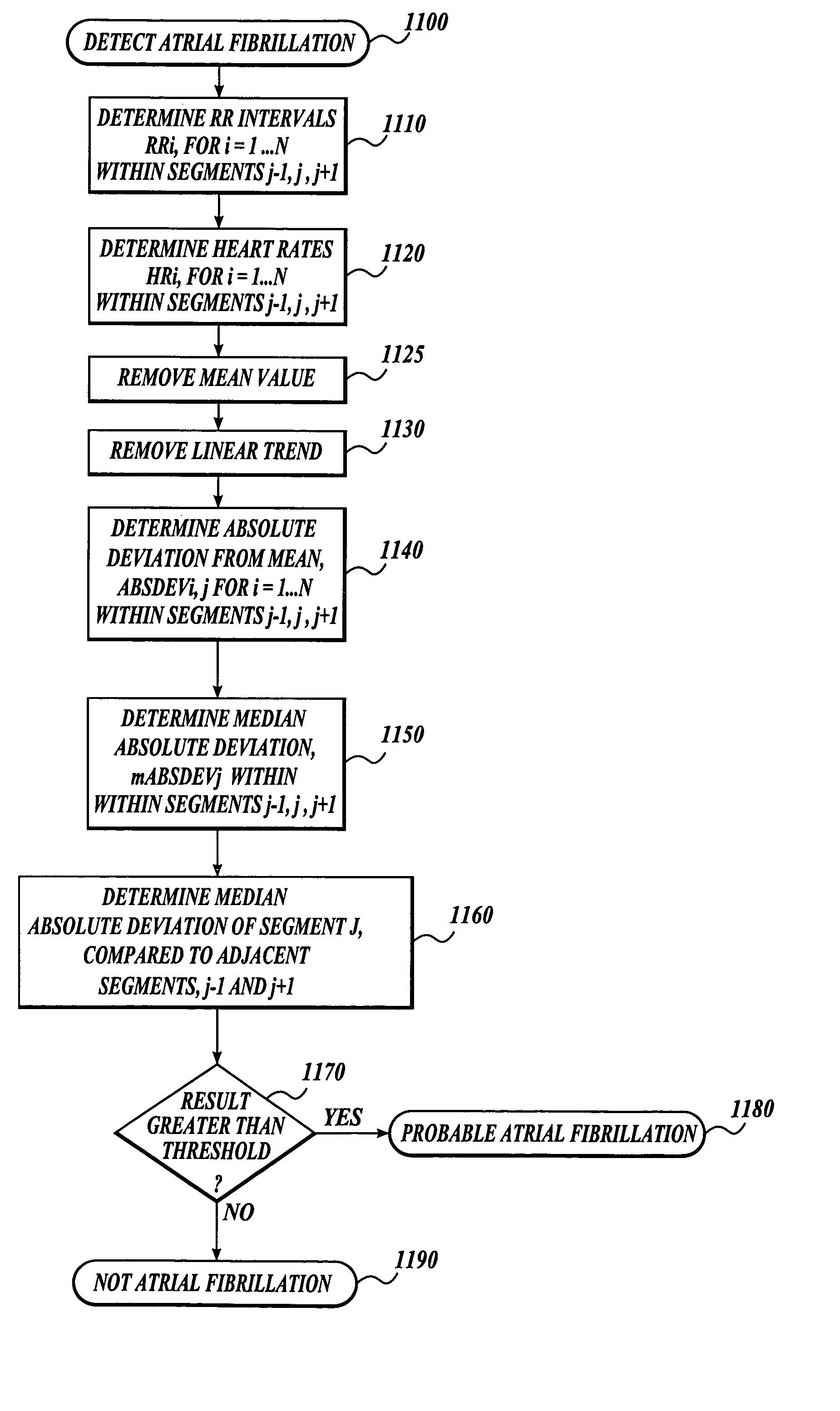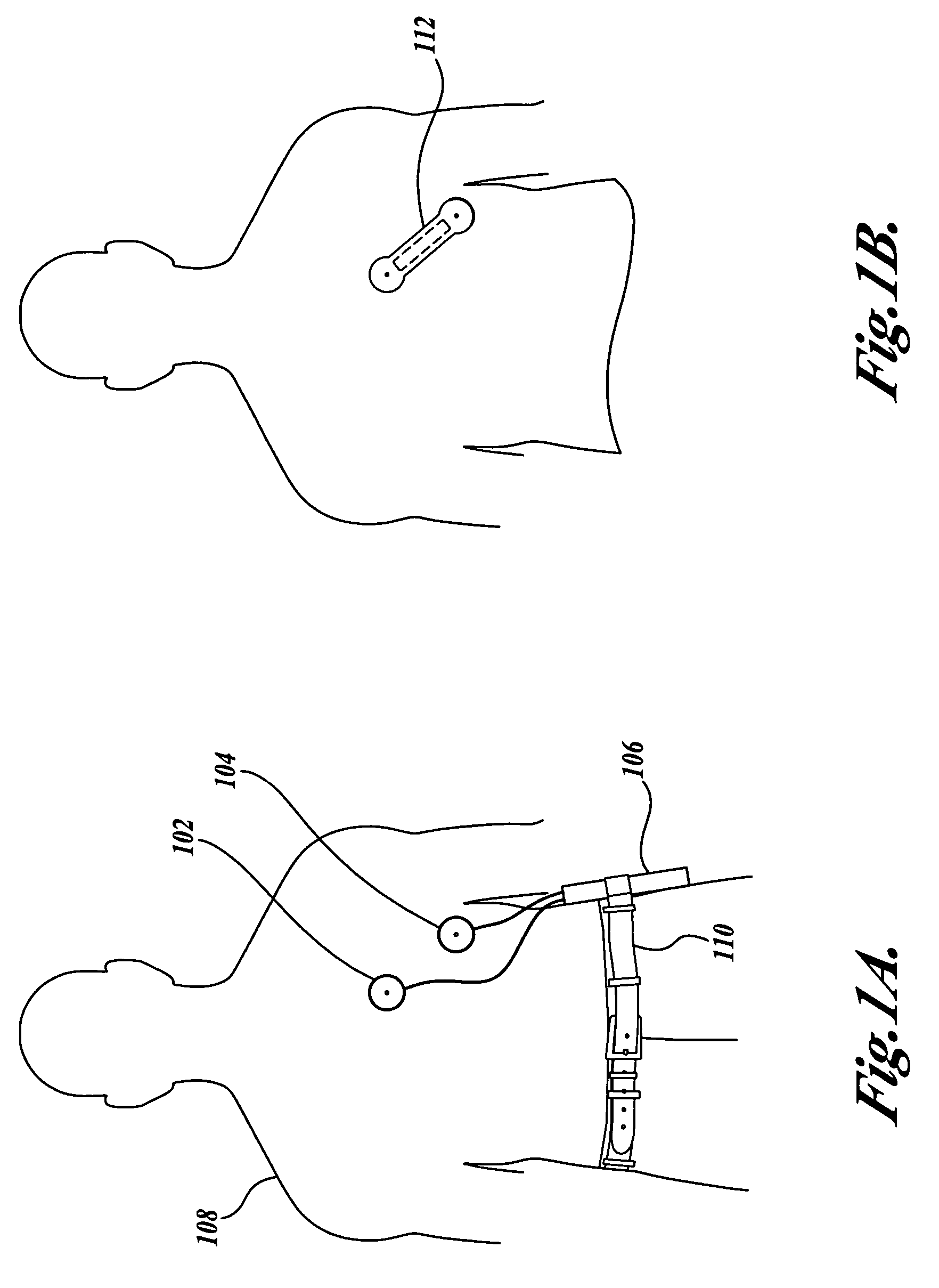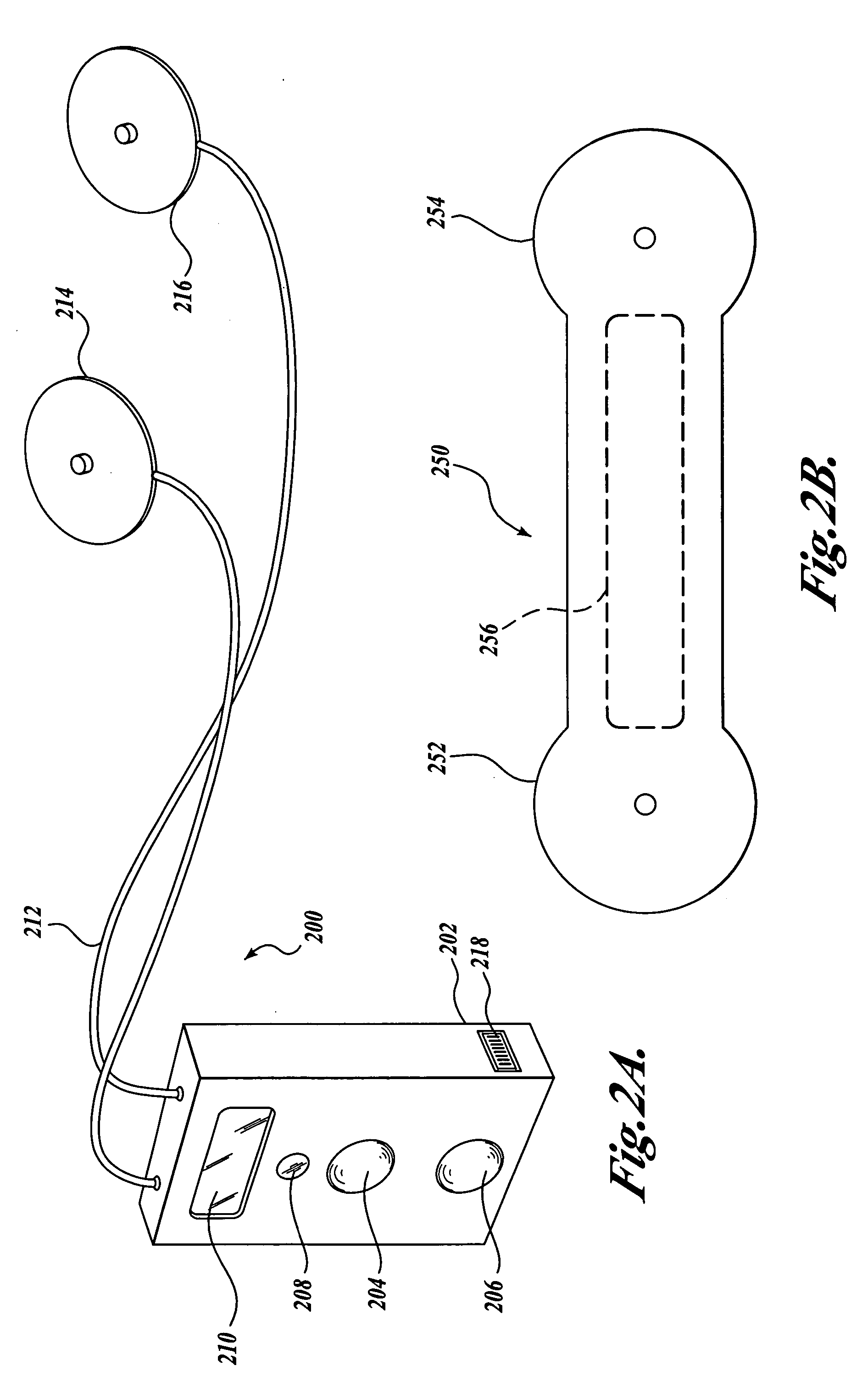Long-term monitoring for detection of atrial fibrillation
a technology of atrial fibrillation and monitoring techniques, applied in the field of long-term monitoring and can solve the problems of increasing the risk of stroke and death, low sensitivity of monitoring techniques for the detection of atrial fibrillation, and limited storage capacity of monitors
- Summary
- Abstract
- Description
- Claims
- Application Information
AI Technical Summary
Problems solved by technology
Method used
Image
Examples
Embodiment Construction
[0034]A system and a method for long-term monitoring and detecting atrial fibrillation are described. While the system and method are ideally suited for detecting atrial fibrillation, the system and method may also find use in other environments. Furthermore, while the system and method are described in portable configurations and environments, the system and method may also find use in fixed and static environments. Thus, it is to be understood that the present invention should not be construed as limited in application to the exemplary embodiments described herein, and such exemplary embodiments should not be construed as limiting.
[0035]FIG. 1A is a pictorial diagram showing an exemplary operating environment for a portable atrial fibrillation monitoring and detection device (“portable monitoring device”). This exemplary operating environment includes a light-weight, small, portable monitoring device 106 which can be used by a patient 108 daily or continuously for several months. ...
PUM
 Login to View More
Login to View More Abstract
Description
Claims
Application Information
 Login to View More
Login to View More - R&D
- Intellectual Property
- Life Sciences
- Materials
- Tech Scout
- Unparalleled Data Quality
- Higher Quality Content
- 60% Fewer Hallucinations
Browse by: Latest US Patents, China's latest patents, Technical Efficacy Thesaurus, Application Domain, Technology Topic, Popular Technical Reports.
© 2025 PatSnap. All rights reserved.Legal|Privacy policy|Modern Slavery Act Transparency Statement|Sitemap|About US| Contact US: help@patsnap.com



